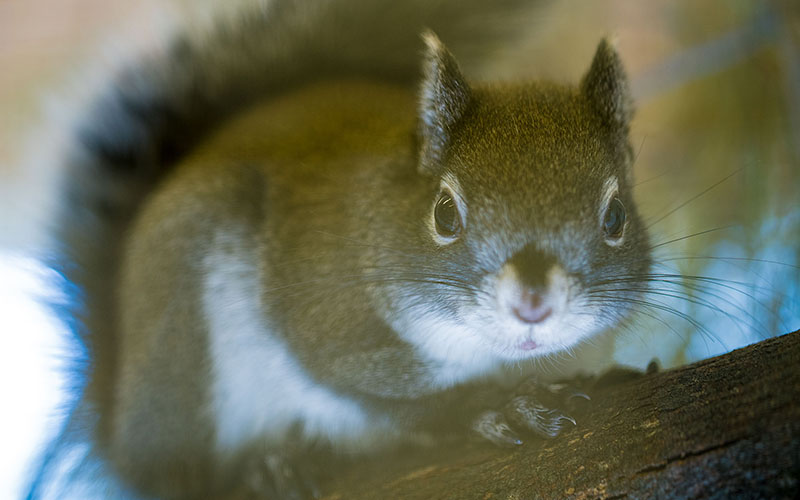WASHINGTON – An endangered squirrel that was driven to the brink of extinction by wildfire just three years ago in southern Arizona has seen its numbers more than triple following federal, state and local preservation efforts.
The Mount Graham red squirrel population was cut from 252 to just 33 squirrels in the wild after the Frye fire destroyed much of their habitat in 2017. But a survey released last month by state and federal agencies estimated there are now at least 109 squirrels on the mountain.
Advocates welcomed the improvement, but said the squirrel, which was put on the endangered species list in 1987, is not out of the woods yet.
“It’s a good sign that it’s heading in an upwards direction rather than stagnating or … heaven forbid, going down,” said Marit Alanen, a biologist with the U.S. Fish and Wildlife Service.
Alanen points to a long list of factors threatening the squirrel’s mountain forest habitat, including fires, both natural and man-made, insect infestations and competition from the Abert squirrel, which was introduced in the 1940s. But wildfires have been the biggest threat, reducing the number of trees available to the squirrels and leaving them exposed to predators.
“We’ve been seeing these fires that have just gotten bigger and bigger over the years and have been of higher severity,” said Alanen. She said the Peak fire in 1996, the Nuttall Gibson fire in 2004 and the Frye fire “have impacted at least 95% of the squirrel’s habitat to some degree.”
That reduction in the forest has led to a “habitat bottleneck,” with squirrels competing for fewer suitable trees, said Robin Silver, cofounder of the Center for Biological Diversity. It’s one reason the center filed suit against the Fish and Wildlife Service in September, in an effort to force an expansion of the squirrels’ critical habitat.
“Never before have they faced this combination of human structures, human roads, past logging, wildfires, intentionally set fires and climate change,” said Silver.
Silver said one of the biggest problems is man-made structures in the critical habitat, such as a Bible camp, cabins and observatories on the mountain, including the Vatican Advanced Technology Telescope. He said those structures are more likely to be protected when there is a fire, and that prescribed burns meant to protect the structures in the first place do so at the expense of squirrel habitat.
Silver said that as long as there’s structures on the mountain, we’re never going to be able to save squirrels.”
“When you’re in a habitat bottleneck, then what you need to do is protect all the surviving habitat that you can, and then hope that the squirrels can then get through this habitat bottleneck until other habitat recovers,” Silver said. “And then that’s how they survive and recover.”
Alanen said the habitat takes around 100 years to recover from a devastating fire, but federal and state agencies are working to help speed the process. But it’s not as easy as just planting more trees, she said.
“When you talk about tree planting as a restoration effort, it actually becomes kind of more complicated, because you can’t just go out and get seeds from anywhere because those trees aren’t adapted to this mountain range,” Alanen said. “And you might be bringing in genetics that may be detrimental to the trees that are up there.”
To keep that from happening, the U.S. Forest Service collects seeds from trees on the mountain and sends them to a nursery in Idaho to be raised until they can be planted on the mountain.
Trees are not the only genetic concern at issue: The Mount Graham red squirrels have been cut off from other species for around 10,000 years, Alanen said, which has led to a lack of genetic diversity in the population.
After the 2017 fire, the Arizona Game and Fish Department, Coronado National Forest, the Fish and Wildlife Service, the University of Arizona and the Arizona Center for Nature Conservation – Phoenix Zoo, teamed up to save the squirrel. Those included a feeding program to help the squirrels that remained on the mountain, efforts to remove the Abert squirrel and a breeding program that has led to some discoveries about the squirrel’s specific breeding behaviors in the wild.
“It’s definitely been a joint effort to try to bring the squirrel back from 35, and hopefully continue moving it towards recovery,” she said.


